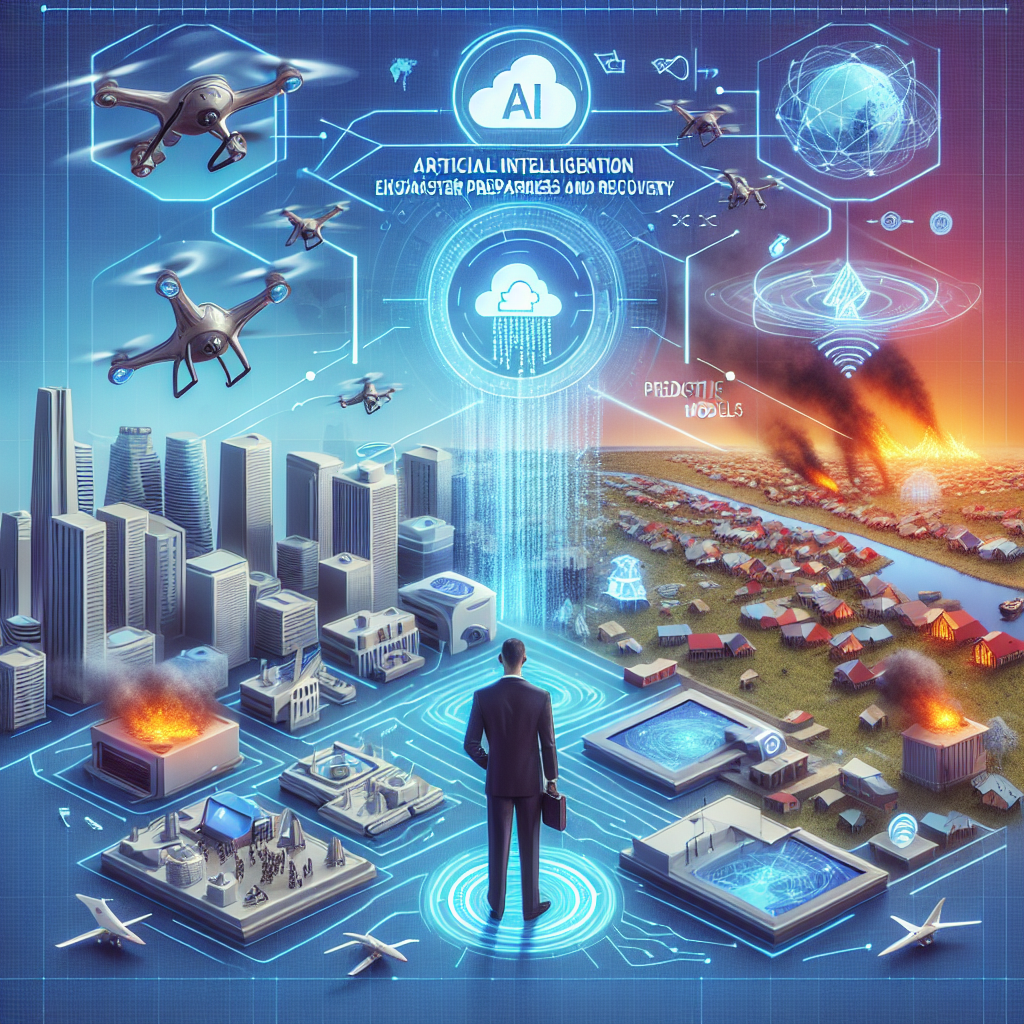Artificial Intelligence (AI) has become an integral tool in enhancing disaster preparedness and recovery efforts around the world. With the increasing frequency and intensity of natural disasters, such as hurricanes, earthquakes, and wildfires, it is essential for governments, organizations, and communities to leverage AI technology to improve response times, allocate resources efficiently, and minimize the impact of disasters on human lives and infrastructure.
AI integration in disaster preparedness and recovery involves the use of advanced algorithms, machine learning, and data analytics to predict, monitor, and respond to disasters in real-time. By analyzing vast amounts of data from various sources, such as weather patterns, social media, and satellite imagery, AI can provide valuable insights to help decision-makers make informed decisions before, during, and after a disaster strikes.
One of the key benefits of AI integration in disaster management is its ability to enhance early warning systems. By analyzing historical data and patterns, AI algorithms can predict the likelihood and severity of a disaster, allowing authorities to issue timely alerts and evacuation orders to at-risk populations. For example, AI-powered flood prediction models can help authorities anticipate flooding events and take proactive measures to protect vulnerable communities.
AI technology can also improve resource allocation and logistics during disaster response efforts. By analyzing real-time data on road conditions, traffic patterns, and available resources, AI algorithms can optimize the deployment of emergency personnel, supplies, and equipment to affected areas. This can help reduce response times and ensure that critical resources reach those in need quickly and efficiently.
Furthermore, AI can enhance situational awareness and decision-making during a disaster by providing real-time updates on the evolving situation. By analyzing data from drones, sensors, and other IoT devices, AI systems can generate interactive maps, heatmaps, and other visualizations to help responders identify areas of high priority and allocate resources accordingly. This can help improve coordination among different response teams and ensure a more effective and coordinated response to disasters.
In addition to response efforts, AI technology can also play a crucial role in disaster recovery and rebuilding processes. By analyzing satellite imagery and other data sources, AI algorithms can assess the extent of damage to infrastructure, buildings, and other assets, allowing authorities to prioritize recovery efforts and allocate resources efficiently. This can help expedite the recovery process and minimize the economic and social impact of disasters on affected communities.
Overall, AI integration in disaster preparedness and recovery offers a wide range of benefits, including improved early warning systems, optimized resource allocation, enhanced situational awareness, and accelerated recovery efforts. By harnessing the power of AI technology, governments, organizations, and communities can better prepare for and respond to disasters, ultimately saving lives and reducing the impact of disasters on society.
FAQs:
Q: How does AI technology improve early warning systems for disasters?
A: AI algorithms analyze historical data and patterns to predict the likelihood and severity of disasters, allowing authorities to issue timely alerts and evacuation orders to at-risk populations.
Q: How can AI technology optimize resource allocation during disaster response efforts?
A: By analyzing real-time data on road conditions, traffic patterns, and available resources, AI algorithms can optimize the deployment of emergency personnel, supplies, and equipment to affected areas, reducing response times and ensuring critical resources reach those in need quickly.
Q: How does AI technology enhance situational awareness and decision-making during disasters?
A: AI systems analyze data from drones, sensors, and other IoT devices to generate interactive maps, heatmaps, and other visualizations that help responders identify areas of high priority and allocate resources accordingly, improving coordination among different response teams.
Q: How can AI technology assist in disaster recovery and rebuilding processes?
A: AI algorithms assess the extent of damage to infrastructure, buildings, and other assets by analyzing satellite imagery and other data sources, allowing authorities to prioritize recovery efforts and allocate resources efficiently, expediting the recovery process and minimizing the economic and social impact of disasters on affected communities.

